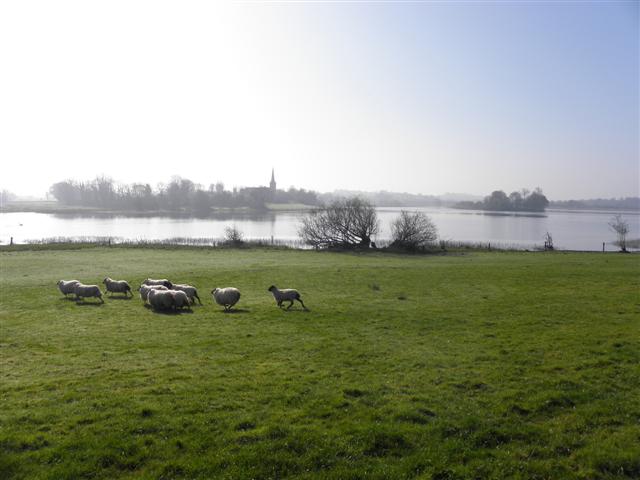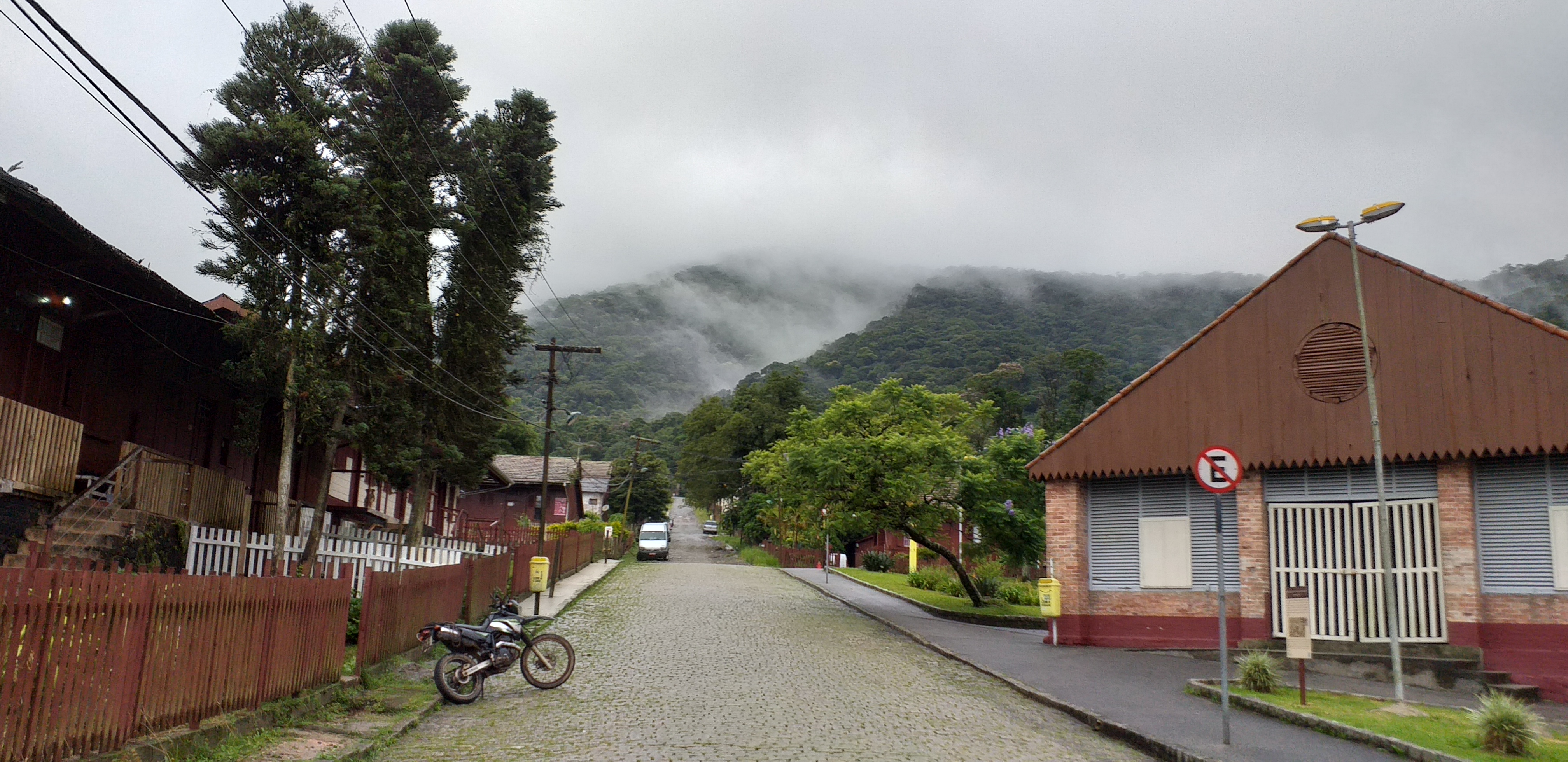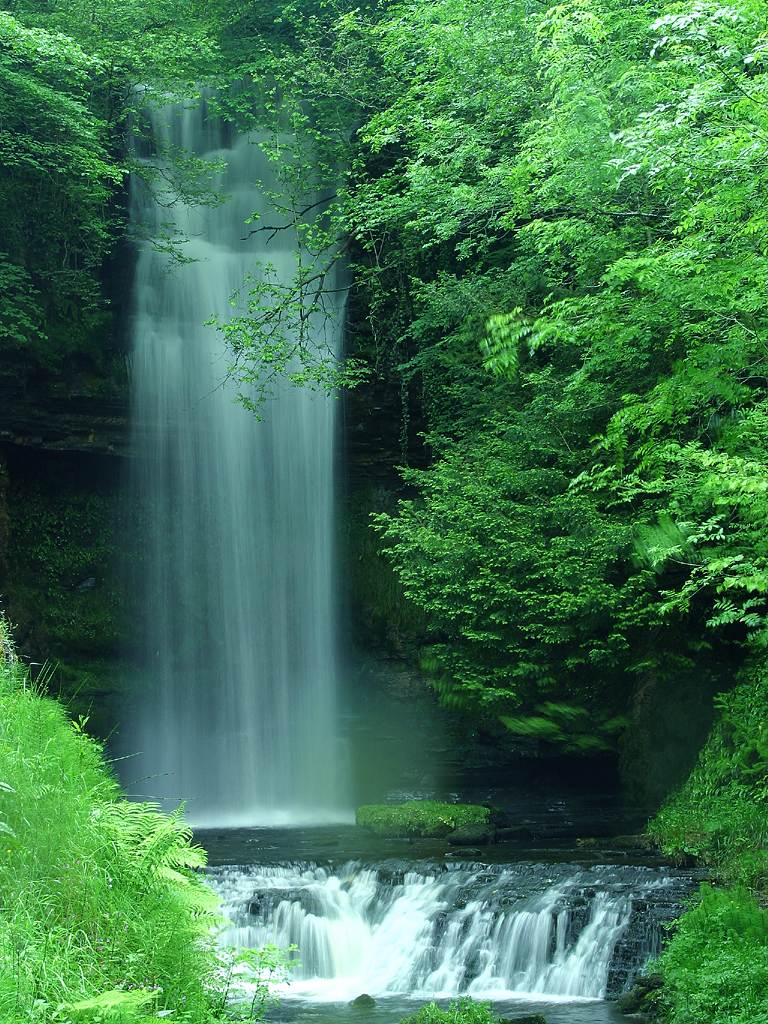|
Greaghnadoony
Greaghnadoony () is a townland in the civil parish of Templeport, County Cavan, Ireland. It lies in the Roman Catholic parish of Corlough and barony of Tullyhaw. Geography Greaghnadoony is bounded on the west by Greaghnaloughry and Corraleehan townlands, both in County Leitrim, and on the east by Tullyveela, Cartronnagilta and Corrachomera townlands. Its chief geographical features are mountain streams and a spring well. Greaghnadoony is traversed by minor public roads and rural lanes. The townland covers 87 statute acres. History In earlier times the townland was probably uninhabited as it consists mainly of bog and poor clay soils. It was not seized by the English during the Plantation of Ulster in 1610 or in the Cromwellian Settlement of the 1660s so some dispossessed Irish families moved there and began to clear and farm the land. A map of the townland drawn in 1813 is in the National Archives of Ireland, Beresford Estate Maps, depicts the townland as ''Greagnadown'' ... [...More Info...] [...Related Items...] OR: [Wikipedia] [Google] [Baidu] |
Corlough
Corlough () is a Roman Catholic parish situated in the Barony of Tullyhaw, County Cavan, Ireland. It derives its name from Corlough townland, in which the parish church is situate. It formed part of the larger parish of Templeport until 1877 when Corlough was made a separate parish. The name of Corlough parish has an unclear derivation. Some references propose it means either 'the Hill of the Lake' or "the Lake of the Herons". These are unlikely meanings as there is no lake in the townland. The earliest reference to the townland is in the 1790 list of Cavan townlands where it is spelled "Corclagh", which would be an Anglicization of "Cor Cloch", meaning either 'the Stone on the Round Hill' or "the Stony Hill", a more likely explanation. Townlands in Corlough parish Aghnacollia; Altachullion Lower; Altachullion Upper; Altateskin; Altcrock; Altinure; Altnadarragh; Arderry; Ardvagh; Cartronnagilta; Clarbally; Corlough townland; Cornacleigh; Corracholia Beg; Corracholia More; ... [...More Info...] [...Related Items...] OR: [Wikipedia] [Google] [Baidu] |
Tullyveela
Tullyveela () is a townland in the civil parish of Templeport, County Cavan, Ireland. It lies in the Roman Catholic parish of Corlough and barony of Tullyhaw. The local pronunciation is Tullyveela. Geography Tullyveela is bounded on the west by Derrynananta Lower, Derrynananta Upper, Gowlan and Lannanerriagh townlands and on the east by Corrachomera, Greaghnadoony, Greaghnaloughry and Tullynaconspod townlands. Its chief geographical features are Derrynananta Lough, mountain streams, a waterfall, forestry plantations, a quarry, gravel pits, dug wells and spring wells. Tullyveela is traversed by minor public roads and rural lanes. The townland covers 505 statute acres. History In earlier times the townland was probably uninhabited as it consists mainly of bog and poor clay soils. It was not seized by the English during the Plantation of Ulster in 1610 or in the Cromwellian Settlement of the 1660s so some dispossessed Irish families moved there and began to clear and farm t ... [...More Info...] [...Related Items...] OR: [Wikipedia] [Google] [Baidu] |
Cartronnagilta
Cartronnagilta () is a townland in the civil parish of Templeport, County Cavan, Ireland. It lies in the Roman Catholic parish of Corlough and barony of Tullyhaw. The local pronunciation is Carthoonnaghilta. Geography Cartronnagilta is bounded on the north by Leitra, Corlough and Corrachomera townlands, on the west by Corraleehan and Greaghnadoony townlands, on the south by Coragh townland and on the east by Cornacleigh, Cronery and Derrinivver townlands. Its chief geographical features are a stream, forestry plantations, gravel pits, a spring well and dug wells. Cartronnagilta is traversed by the L1028 public road and rural lanes. The townland covers 241 statute acres. History In medieval times the McGovern barony of Tullyhaw was divided into economic taxation areas called ballibetoes, from the Irish ''Baile Biataigh'' (Anglicized as 'Ballybetagh'), meaning 'A Provisioner's Town or Settlement'. The original purpose was to enable the farmer, who controlled the baile, to prov ... [...More Info...] [...Related Items...] OR: [Wikipedia] [Google] [Baidu] |
Corrachomera
Corrachomera () is a townland in the civil parish of Templeport, County Cavan, Ireland. It lies in the Roman Catholic parish of Corlough and barony of Tullyhaw. The local pronunciation is Currach-Humra. Geography Corrachomera is bounded on the north by Owencam and Tullywaum townlands, on the west by Tullyveela and Tullynaconspod townlands, on the south by Cartronnagilta and Greaghnadoony townlands and on the east by Corlough townland, Leitra, Corlough and Tullytrasna townlands. Its chief geographical features are mountain streams, forestry plantations, gravel pits, dug wells and spring wells. Corrachomera is traversed by minor public roads and rural lanes. The townland covers 337 statute acres. History In medieval times the McGovern barony of Tullyhaw was divided into economic taxation areas called ballibetoes, from the Irish ''Baile Biataigh'' (Anglicized as 'Ballybetagh'), meaning 'A Provisioner's Town or Settlement'. The original purpose was to enable the farmer, who controll ... [...More Info...] [...Related Items...] OR: [Wikipedia] [Google] [Baidu] |
Townland
A townland ( ga, baile fearainn; Ulster-Scots: ''toonlann'') is a small geographical division of land, historically and currently used in Ireland and in the Western Isles in Scotland, typically covering . The townland system is of Gaelic origin, pre-dating the Norman invasion, and most have names of Irish origin. However, some townland names and boundaries come from Norman manors, plantation divisions, or later creations of the Ordnance Survey.Connolly, S. J., ''The Oxford Companion to Irish History, page 577. Oxford University Press, 2002. ''Maxwell, Ian, ''How to Trace Your Irish Ancestors'', page 16. howtobooks, 2009. The total number of inhabited townlands in Ireland was 60,679 in 1911. The total number recognised by the Irish Place Names database as of 2014 was 61,098, including uninhabited townlands, mainly small islands. Background In Ireland a townland is generally the smallest administrative division of land, though a few large townlands are further divided into ... [...More Info...] [...Related Items...] OR: [Wikipedia] [Google] [Baidu] |
Civil Parishes In Ireland
Civil parishes () are units of territory in the island of Ireland that have their origins in old Gaelic territorial divisions. They were adopted by the Anglo-Norman Lordship of Ireland and then by the Elizabethan Kingdom of Ireland, and were formalised as land divisions at the time of the Plantations of Ireland. They no longer correspond to the boundaries of Roman Catholic or Church of Ireland parishes, which are generally larger. Their use as administrative units was gradually replaced by Poor Law Divisions in the 19th century, although they were not formally abolished. Today they are still sometimes used for legal purposes, such as to locate property in deeds of property registered between 1833 and 1946. Origins The Irish parish was based on the Gaelic territorial unit called a '' túath'' or '' Trícha cét''. Following the Norman invasion of Ireland, the Anglo-Norman barons retained the ''tuath'', later renamed a parish or manor, as a unit of taxation. The civil parish ... [...More Info...] [...Related Items...] OR: [Wikipedia] [Google] [Baidu] |
Templeport
Templeport () is a civil parish in the barony of Tullyhaw, County Cavan, Ireland. The chief towns in the parish are Bawnboy and Ballymagauran. The large Roman Catholic parish of Templeport containing 42,172 statute acres was split up in the 18th & 19th centuries into three new parishes, Templeport, Corlough and Glangevlin. Etymology The name of Templeport parish derives from the old townland of Templeport (which is now shortened to Port) which is the anglicisation of the Gaelic 'Teampall An Phoirt' ("The Church of the Port or Bank or Landing-Place"). The church referred to is the old church on St. Mogue's Island in the middle of Port Lake. This church fell into disuse in medieval times and a new church was built on the opposite shore of the lake. It was forfeited to Queen Elizabeth in 1590 and started use as a Protestant church in about 1610. It is very unlikely that the island church ever served as the parish church because there was only one boat available and it would have ... [...More Info...] [...Related Items...] OR: [Wikipedia] [Google] [Baidu] |
County Cavan
County Cavan ( ; gle, Contae an Chabháin) is a county in Ireland. It is in the province of Ulster and is part of the Border Region. It is named after the town of Cavan and is based on the historic Gaelic territory of East Breffny (''Bréifne''). Cavan County Council is the local authority for the county, which had a population of 76,176 at the 2016 census. Geography Cavan borders six counties: Leitrim to the west, Fermanagh and Monaghan to the north, Meath to the south-east, Longford to the south-west and Westmeath to the south. Cavan shares a border with County Fermanagh in Northern Ireland. Cavan is the 19th largest of the 32 counties in area and the 25th largest by population. The county is part of the Northern and Western Region, a NUTS II area, and in that region, is part of the Border strategic planning area, a NUTS III entity. The county is characterised by drumlin countryside dotted with many lakes and hills. The north-western area of the county is spar ... [...More Info...] [...Related Items...] OR: [Wikipedia] [Google] [Baidu] |
Republic Of Ireland
Ireland ( ga, Éire ), also known as the Republic of Ireland (), is a country in north-western Europe consisting of 26 of the 32 Counties of Ireland, counties of the island of Ireland. The capital and largest city is Dublin, on the eastern side of the island. Around 2.1 million of the country's population of 5.13 million people resides in the Greater Dublin Area. The sovereign state shares its only land border with Northern Ireland, which is Countries of the United Kingdom, part of the United Kingdom. It is otherwise surrounded by the Atlantic Ocean, with the Celtic Sea to the south, St George's Channel to the south-east, and the Irish Sea to the east. It is a Unitary state, unitary, parliamentary republic. The legislature, the , consists of a lower house, ; an upper house, ; and an elected President of Ireland, President () who serves as the largely ceremonial head of state, but with some important powers and duties. The head of government is the (Prime Minister, liter ... [...More Info...] [...Related Items...] OR: [Wikipedia] [Google] [Baidu] |
Tullyhaw
Tullyhaw ( ga, Teallach Eathach) (which means 'The Territory of Eochaidh', an ancestor of the McGoverns, who lived ) is a Barony in County Cavan in the Republic of Ireland. The area has been in constant occupation since pre-4000 BC. Located in the northwest of the county, it has been referred to as Cavan's panhandle. In 1579, East Breifne, then part of Connacht, was made a shire. The shire was named County Cavan ( ga, An Cabhán) after Cavan, the area's main town. The administration remained in the control of the local Irish dynasty and subject to the Brehon and Canon Law. In 1584, Sir John Perrot formed the shire into a county in Ulster. It was subdivided into seven baronies: *two of which were assigned to Sir John O'Reilly and *three to other members of the family; *two remaining, possessed by the septs of **McKiernan Clan and ** McGovern (a.k.a. ''Magauran'') The last one, Tullyhaw, encompassed the mountains bordering on O'Rourke's country, and was left subj ... [...More Info...] [...Related Items...] OR: [Wikipedia] [Google] [Baidu] |
Road At Greaghnadoony (geograph 3679417)
A road is a linear way for the conveyance of traffic that mostly has an improved surface for use by vehicles (motorized and non-motorized) and pedestrians. Unlike streets, the main function of roads is transportation. There are many types of roads, including parkways, avenues, controlled-access highways (freeways, motorways, and expressways), tollways, interstates, highways, thoroughfares, and local roads. The primary features of roads include lanes, sidewalks (pavement), roadways (carriageways), medians, shoulders, verges, bike paths (cycle paths), and shared-use paths. Definitions Historically many roads were simply recognizable routes without any formal construction or some maintenance. The Organization for Economic Co-operation and Development (OECD) defines a road as "a line of communication (travelled way) using a stabilized base other than rails or air strips open to public traffic, primarily for the use of road motor vehicles running on their own wheels", whic ... [...More Info...] [...Related Items...] OR: [Wikipedia] [Google] [Baidu] |
County Leitrim
County Leitrim ( ; gle, Contae Liatroma) is a county in Ireland. It is in the province of Connacht and is part of the Northern and Western Region. It is named after the village of Leitrim. Leitrim County Council is the local authority for the county, which had a population of 35,087 according to the 2022 census. The county encompasses the historic Gaelic territory of West Breffny () corresponding to the northern part of the county, and Muintir Eolais or Conmaicne Réin, corresponding to the southern part. Geography Leitrim is the 26th largest of the 32 counties by area (the 21st largest of the 26 counties of the Republic) and the smallest by population. It is the smallest of Connacht's five counties in both size and population. Leitrim is bordered by the counties of Donegal to the north, Fermanagh to the north-east, Cavan to the east, Longford to the south, Roscommon to the south-west and Sligo to the west. Fermanagh is in Northern Ireland while all the other ... [...More Info...] [...Related Items...] OR: [Wikipedia] [Google] [Baidu] |
.jpg)

.jpg)






